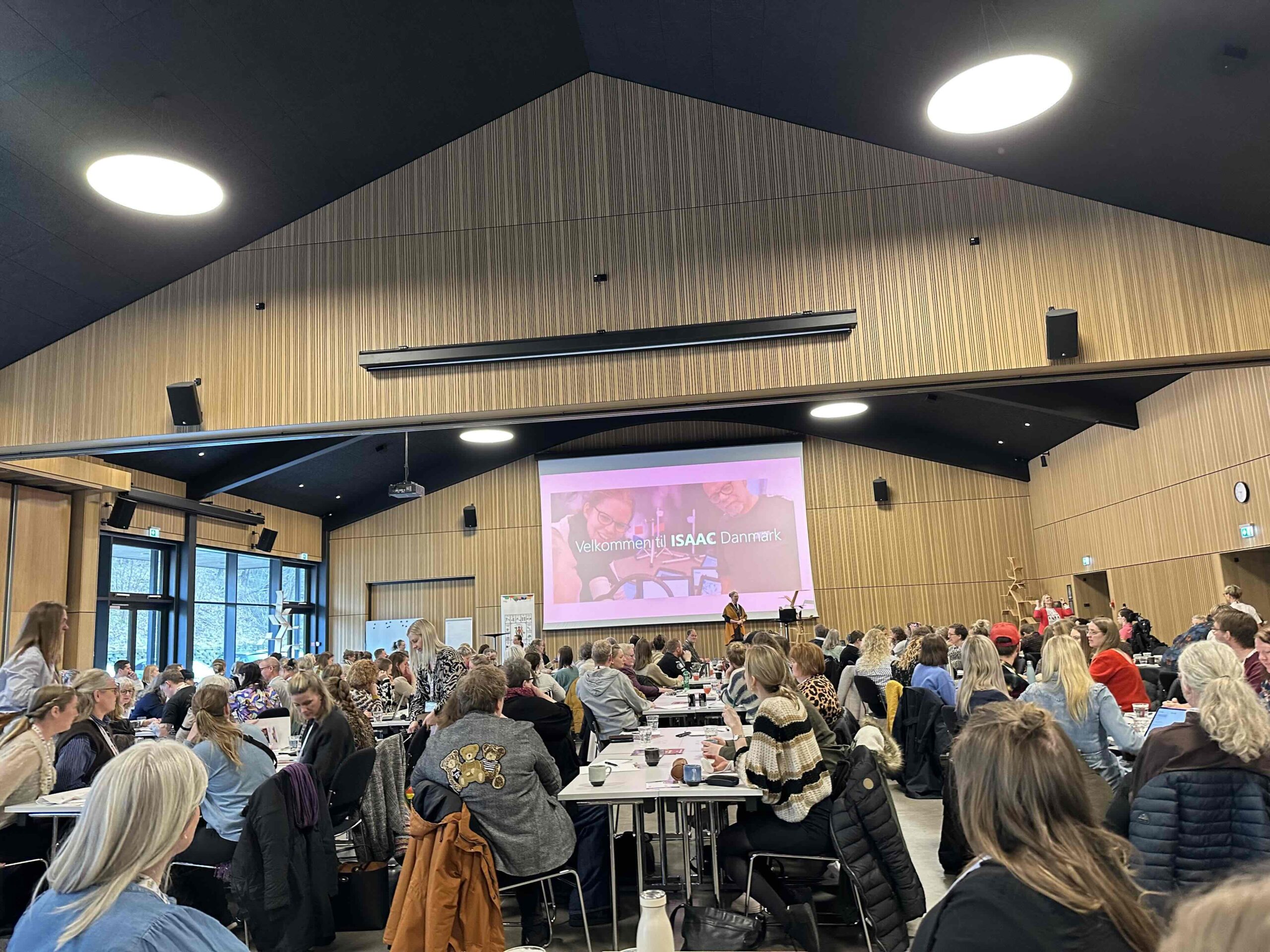
This week I attended the ISAAC Denmark 2025 Conference, organized by the Danish chapter of the International Society for Augmentative and Alternative Communication. The main message that stayed with me was this: we must work both to give people with communication difficulties a voice, and to prepare their surroundings for listening.
Communication requires effort from both sides. This is true for all of us, to some extent. But for people with complex communication needs, the path from thought to understanding is full of obstacles. It’s not just about access to tools within Augmentative and Alternative Communication (AAC), but also about being met by someone who is willing to listen, interpret, and insist that there is something to understand.
From Inner Voice to Outer Expression
We all have an inner voice – a stream of thoughts that follows us through daily life. For most of us, it’s easy to turn that inner voice into outward expression, but for people with complex communication needs, finding a way to express that voice is far from simple.
Morten Jacobsen from the Communication Centre in Hillerød reminded us just how many competencies communication really requires. As he pointed out: the act of speaking alone involves the coordination of over 100 muscles! Even with the right prerequisites, sensory needs can still get in the way. Tenna Lygum Sørensen from COMUNIK shared compelling examples of how sensory profiles can help tailor AAC support – some people need less input, others more, before communication even becomes possible.
Jeppe Forchhammer, who was born with cerebral palsy (CP), was recently featured in the Danish documentary series “Wingman”, where he had to cast a voice actor to represent what he called tankestemmen – his thinking voice. At the conference, he described how strange it felt: how does someone who cannot speak know what they sound like inside their own head?
Even after the voice actor was found, it wasn’t easy to express thoughts, intentions, and emotions. Because even when someone with communication difficulties finds a way to express themselves – with signs, symbols, speech devices, or body language – their message can still be lost. As Sofia Arezoo, another AAC user who spoke at the conference, said: “Maybe you don’t understand me, but I understand you.” Communication doesn’t happen in a vacuum – someone has to be there on the other side.
The Role of the Communication Partner
Jeppe described the long conversations he had to have with the documentary’s director about every single scene, and how ended up writing 62,755 words with his eyes – words that eventually became the documentary’s voiceover. For Jeppe’s voice to be heard, someone had to listen first. Communication is built through interaction, interpretation, clarification, and a genuine will to understand one another.
Several other presentations also emphasized the importance of the communication partner. The project “KEND MIG!” (“KNOW ME!”) demonstrated how the KnowMe tool enables communication even when a person’s primary modes of expression are movement, facial expressions, and behavior. Similarly, the project “Samtale Kraft” (“Conversation Power”) at the Bofælleskabet Postens Vej residential community showed how actively working to understand each individual allowed residents to become participants in their own lives – rather than just spectators.
In his talk, professor Stephen von Tetzchner explained how the traditional focus on teaching children language internalization (vocabulary, comprehension, matching exercises, etc.) is not enough. We also need to focus on externalization: giving children (and adults) tools, models, opportunities, and support to actually say something. That requires patient and persistent communication partners. Many AAC users are never given the time, encouragement, or access they need to develop their expressive language.
Technology as a Facilitator
Technology can support every step in the communication chain: from thought, to expression, to recognition and shared understanding.
Some tools support language development from the start: like games that build motor skills (Louise from Ergoterapi, teknologi og gaming shared several success stories), or apps where children can practice signs and symbols. Other tools make it possible to speak: such as speech devices, synthetic voices, and eye-tracking systems that turn intention into output. And then there are technologies that support the listener: systems like KnowMe, which help caregivers and professionals interpret movements, expressions, and patterns in people who communicate in unconventional ways.
But even the most advanced technology is only a tool. It can create possibilities – but not connection. It can generate speech – but not meaning. For true communication to happen, there must be someone on the other end who believes there is a message worth listening to.
